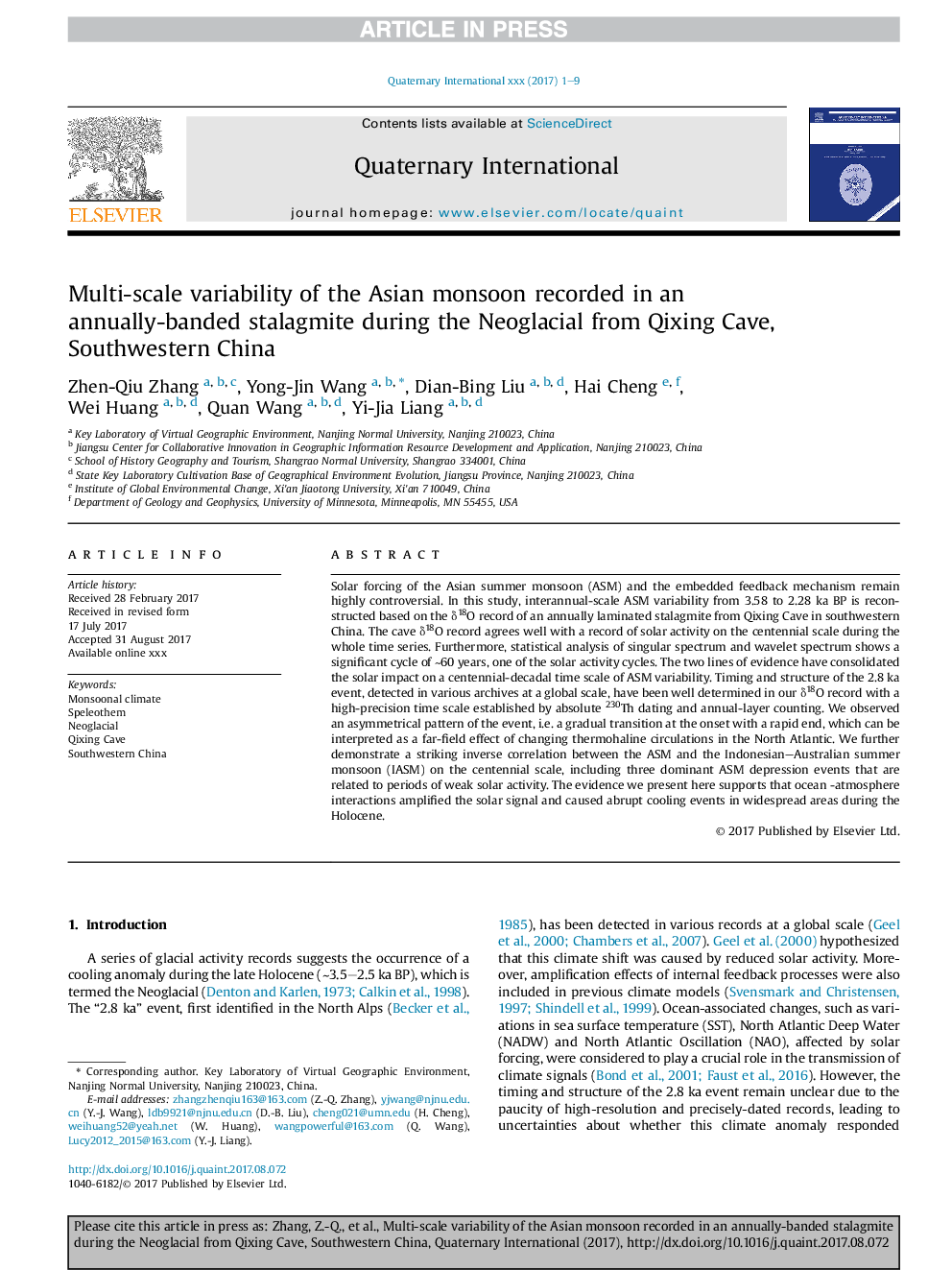| Article ID | Journal | Published Year | Pages | File Type |
|---|---|---|---|---|
| 7448936 | Quaternary International | 2018 | 9 Pages |
Abstract
Solar forcing of the Asian summer monsoon (ASM) and the embedded feedback mechanism remain highly controversial. In this study, interannual-scale ASM variability from 3.58 to 2.28 ka BP is reconstructed based on the δ18O record of an annually laminated stalagmite from Qixing Cave in southwestern China. The cave δ18O record agrees well with a record of solar activity on the centennial scale during the whole time series. Furthermore, statistical analysis of singular spectrum and wavelet spectrum shows a significant cycle of â¼60 years, one of the solar activity cycles. The two lines of evidence have consolidated the solar impact on a centennial-decadal time scale of ASM variability. Timing and structure of the 2.8 ka event, detected in various archives at a global scale, have been well determined in our δ18O record with a high-precision time scale established by absolute 230Th dating and annual-layer counting. We observed an asymmetrical pattern of the event, i.e. a gradual transition at the onset with a rapid end, which can be interpreted as a far-field effect of changing thermohaline circulations in the North Atlantic. We further demonstrate a striking inverse correlation between the ASM and the Indonesian-Australian summer monsoon (IASM) on the centennial scale, including three dominant ASM depression events that are related to periods of weak solar activity. The evidence we present here supports that ocean -atmosphere interactions amplified the solar signal and caused abrupt cooling events in widespread areas during the Holocene.
Related Topics
Physical Sciences and Engineering
Earth and Planetary Sciences
Geology
Authors
Zhen-Qiu Zhang, Yong-Jin Wang, Dian-Bing Liu, Hai Cheng, Wei Huang, Quan Wang, Yi-Jia Liang,
